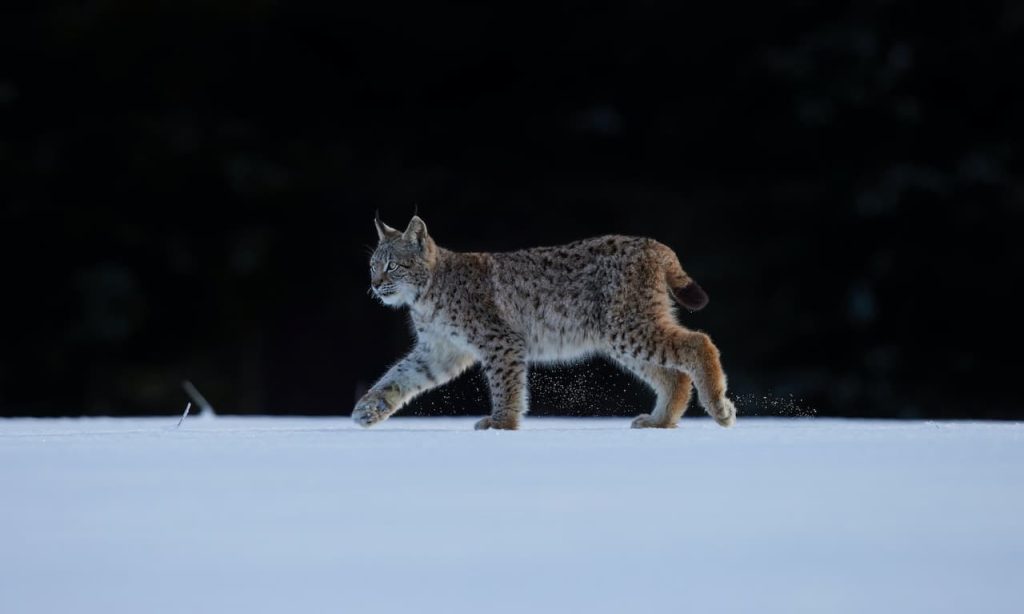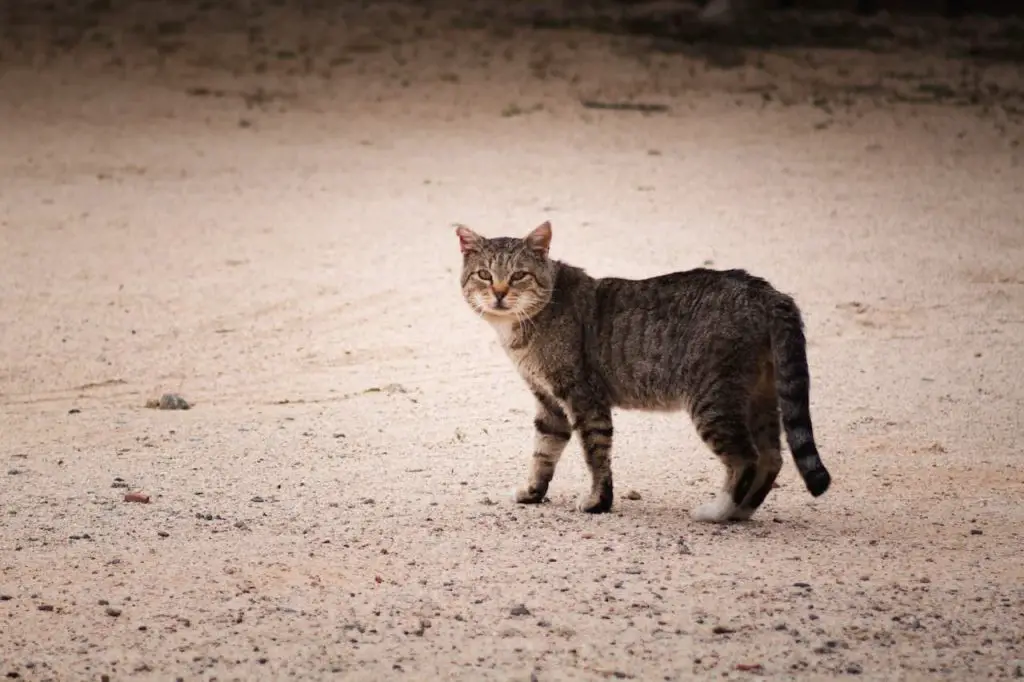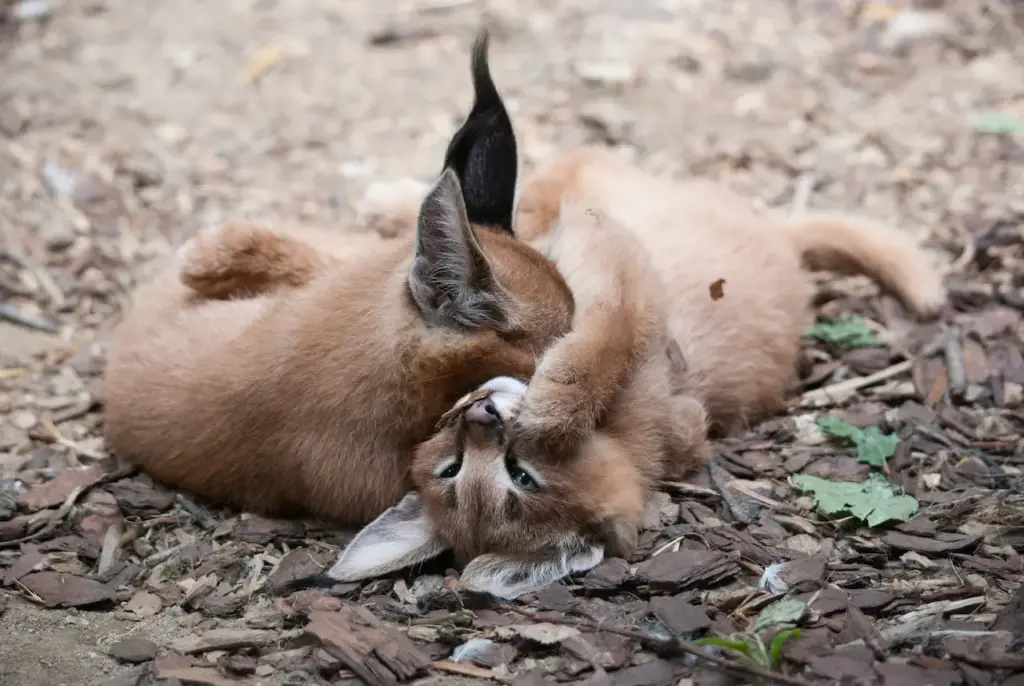What Eats Wild Cats?
Categories
- Accipitridae (1)
- Acrididae (1)
- Algae (2)
- Alligatoridae (1)
- Amoebidae (1)
- Amphibians (3)
- Anatidae (1)
- Anguillidae (1)
- Arachnids (2)
- Bears (2)
- Big Cats (3)
- Birds (13)
- Bovidae (5)
- Bufonidae (1)
- Camelids (1)
- Cameras (1)
- Canines (13)
- Caridea (1)
- Carnivora (10)
- Castoridae (1)
- Cats (5)
- Cebidae (1)
- Cephalopod (1)
- Cervidae (2)
- Cetacean (1)
- Chondrichthyes (1)
- Crocodilia (2)
- Crustaceans (4)
- Culicidae (1)
- Cyaneidae (1)
- Dasypodidae (1)
- Dasyurids (1)
- Deer (1)
- Delphinidae (1)
- Desktop (1)
- Didelphidae (1)
- Dinosaurs (1)
- Dogs (13)
- Dolphins (2)
- Echinoderms (1)
- Education (10)
- Elephantidae (1)
- Equine (1)
- Erethizontidae (1)
- Erinaceidae (1)
- Farming (1)
- Felidae (5)
- Fish (5)
- Food Chain (31)
- Food Web (2)
- Formicidae (1)
- Frugivore (1)
- Gaming (1)
- Gastropods (1)
- Giraffids (1)
- Great Apes (2)
- Health Conditions (3)
- Herbivore (4)
- Hi-Fi (1)
- Hippopotamidae (1)
- Hominidae (1)
- Insects (10)
- Invertebrates (2)
- Keyboards (1)
- Laptops (1)
- Leporidae (1)
- Mammals (23)
- Marsupials (4)
- Mephitidae (1)
- Microchiroptera (1)
- Mollusks (2)
- Mongoose (1)
- Muridae (1)
- Nocturnal Animals (1)
- Odobenidae (1)
- Omnivore (2)
- Phasianidae (1)
- Phocidae (1)
- Plankton (1)
- Plants (2)
- Primate (1)
- Ranidae (1)
- Reptiles (7)
- Rhinocerotidae (1)
- Rodents (5)
- Salamandridae (1)
- Scarabaeidae (1)
- Sciuridae (2)
- Sharks (1)
- Shellfish (1)
- Sound (1)
- Spheniscidae (1)
- Suidae (1)
- Superfamily Papilionoidea (1)
- Theraphosidae (1)
- What Eats (5)
Wild cats comprise around 40 species from the family Felidae found across the world’s forests, grasslands, deserts, and mountains. Ranging from the mighty tiger to the elusive Iriomote cat, wild cats inhabit a range of ecological niches as mid-sized predators.
Some species fill apex predator roles regulating prey populations, while others are mesopredators subject to competition from dominant carnivores.
Wild cats worldwide face threats from various predators and scavengers that eat them and their prey. As mid-sized predators, wild cats fit into ecosystem food webs as both predator and prey. Their survival depends on avoiding becoming a meal themselves.
In this article, we will explore what creatures eat wild cats and the pressures they face across different habitats.
Table of Contents
ToggleSignificance of Wild Cats in the Animal Kingdom
As predators, wild cats help regulate populations of small mammals, birds, reptiles, amphibians, and fish, which make up their varied diets. This regulates ecosystem structure and promotes biodiversity. As prey species themselves for larger carnivores, wild cats are key components of food chains.
Their varied hunting strategies provide models of predator behavior evolution. As flagship species, wild cats serve as conservation icons for protecting habitats. Their continued coexistence requires understanding the threats wild cats face from predators and humans alike.
Natural Predators of Wild Cats
Large Carnivores
The major predators of wild cats are larger carnivorous mammals that kill and eat them when possible. These apex predators exert top-down pressures on wild cat populations.
Lions
In Africa, lions view smaller wild cats like cheetahs and leopards as competition. Lions will kill wild cats they encounter, especially vulnerable kittens, to eliminate rivals over shared prey resources.
Leopards
Leopards threaten smaller wild cats through direct killing for food and competition over prey species. They are opportunistic hunters and will prey on wild cat kittens if given the chance.
Tigers
In Asia, tigers kill and eat smaller wild cats when they encounter them, mainly as competitors. Tigers pose the greatest risk to wild cat kittens, which they can easily snatch up as food due to their much larger size.

What Eats Wild Cats What Do Wild Cats Eat
Scavengers
Scavenger species dispose of wild cat remains, preventing disease spread by cleaning up carcasses. They recycle the nutrients back into the ecosystem.
Hyenas
Spotted hyenas and striped hyenas will readily scavenge on the carcasses of wild cats like cheetahs killed by other predators or dying from starvation or injuries. Their powerful jaws demolish bones.
Vultures
Various vulture species in Africa and Eurasia soar over wild lands, looking for animal remains. They quickly descend upon and consume the carcasses of wild cats that were killed or died from other causes.
Insects
Carrion-feeding insects are among the first scavengers to arrive at wild cat carcasses. Blowflies, burying beetles, and other insects recycle cat remains and prevent the spread of diseases.
What Eats Wild Cats & Food Competition
Wild cats also face indirect competition from other medium-sized predators that hunt the same prey animals, thereby limiting food availability.
Leopards
In both Africa and Asia, leopards strongly compete with smaller wild cats over shared prey like deer and antelope. Leopards’ ability to haul kills into trees reduces prey access for wild cats.
Caracals
In Africa, caracals compete with wild cats like servals over similar rodents, birds, and small mammal prey. When resources are scarce, competition can lead to starvation risks.
Dholes
Dholes or Asian wild dogs outcompete jungle cats and leopard cats in Asia due to cooperative pack hunting, which allows for taking down much larger prey like deer.
What Eats Wild Cats & Birds of Prey
Eagles: Aerial Predators of Cats
Large eagles, like martial eagles in Africa and harpy eagles in South America, can seize adult small wild cats and vulnerable kittens as prey with their crushing talons and razor-sharp beaks.
Most cat-hunting occurs at unguarded dens; the surprise aerial attacks leave felids unable to respond. Only big cats can withstand strikes by heavyweight raptors.
Owls: Silent Night Hunters
Under cover of darkness, large owls like Eurasian eagle-owls and great horned owls ambush and kill unsuspecting wild cats up to around 4 kilograms in weight.
Their camouflage and silent flight give owls the element of surprise when attacking unwary felids. Mostly, smaller cat species and juveniles fall prey to owls’ razor-sharp talons and beaks.
What Eats Wild Cats & Human Impact on Wild Cat Populations
Fur Trade and Traditional Beliefs
Wild cats have been heavily persecuted by humans for their valuable fur pelts and also killed out of superstitious beliefs. Species like tigers, leopards, ocelots, and bobcats declined drastically during the 19th-20th century fur trade. Poaching continues to pose major threats, especially for tigers and leopards.
Conservation Efforts to Combat Poaching
International trade bans, anti-poaching policing, and cooperation with local communities have helped curb the scale of felid poaching since the 1970s-80s.
Public awareness campaigns and forest patrols protect cats. Poaching still occurs, requiring ongoing anti-trafficking programs and enforcement.
What Eats Wild Cats & Habitat Loss and Fragmentation
Deforestation and Urbanization
Rampant habitat loss from deforestation, agriculture, and human settlements has depleted forests and isolated felid populations.
Cat home ranges become fragmented with reduced hunting grounds and prey. Several species now only survive in small pockets of remaining wilderness.
Rehabilitation and Protected Areas
Establishing protected habitat reserves with wildlife corridors and restoring degraded areas has assisted some felid recoveries.
But small, fragmented populations remain vulnerable. Maintaining connectivity between preserves while expanding their size and number is an ongoing need for conservation.
What Eats Wild Cats & Adaptations and Survival Strategies of Wild Cats
Stealth and Hunting Techniques
Camouflage and Ambush Tactics
Wild cats rely on cryptic fur coloration that allows them to blend into habitat backgrounds and stealthily stalk prey without detection. Most species ambush prey using cover and patience to launch explosive, rapid attacks that give prey little chance to react and escape.
Nocturnal Hunting Behavior
Many smaller wild cats are nocturnal to avoid daytime dominant predators like eagles. Their reflective night vision adaptations allow effective hunting under low light. Nocturnality also reduces competition with diurnal predators. Around dawn and dusk, their activity overlaps larger cats.
Flexibility and opportunism in prey selection
Wild cats are adaptable and can switch between different prey species based on seasonal availability and local abundance. Leopards can feed on over 100 different mammals, birds, and reptiles.
Caracals take mammals like rodents and hyraxes but also opportunistically hunt guinea fowl and francolins. Fishing cats target fish but also catch frogs, crustaceans, and small mammals. This diet flexibility allows wild cats to exploit whatever prey is readily available in their habitat.
Avoidance of areas with dominant competitors
Wild cats often avoid areas occupied by larger, dominant predators that pose risks. Leopards and jaguars retreat to more covered, wooded domains rather than expose themselves to open areas used by lions and tigers.
Cheetahs steer clear of waterholes and river courses frequented by crocodiles. Spatial partitioning of habitat use minimizes dangerous encounters.
Denning in hidden sites to protect vulnerable kittens
Female wild cats shelter newborn kittens by denning in secluded spots away from disturbances and other predators. Dense vegetation, caves, rock crevices, hollow logs, and excavated burrows all provide concealment.
Secrecy of the den location is paramount. Some species frequently move kittens between different dens for added protection. Hiding kittens during their most vulnerable early weeks helps minimize mortality risks from predators and infanticide by males.
What Eats Wild Cats Conclusion
Wild cats walk a delicate tightrope between being predator and prey within ecosystem food webs. Their continued success relies on effective hunting while minimizing risks from larger predators and scavengers.
Through key adaptations that balance stealth and strength, wild cats persist as important mesopredators contributing to biodiversity wherever they occur.


